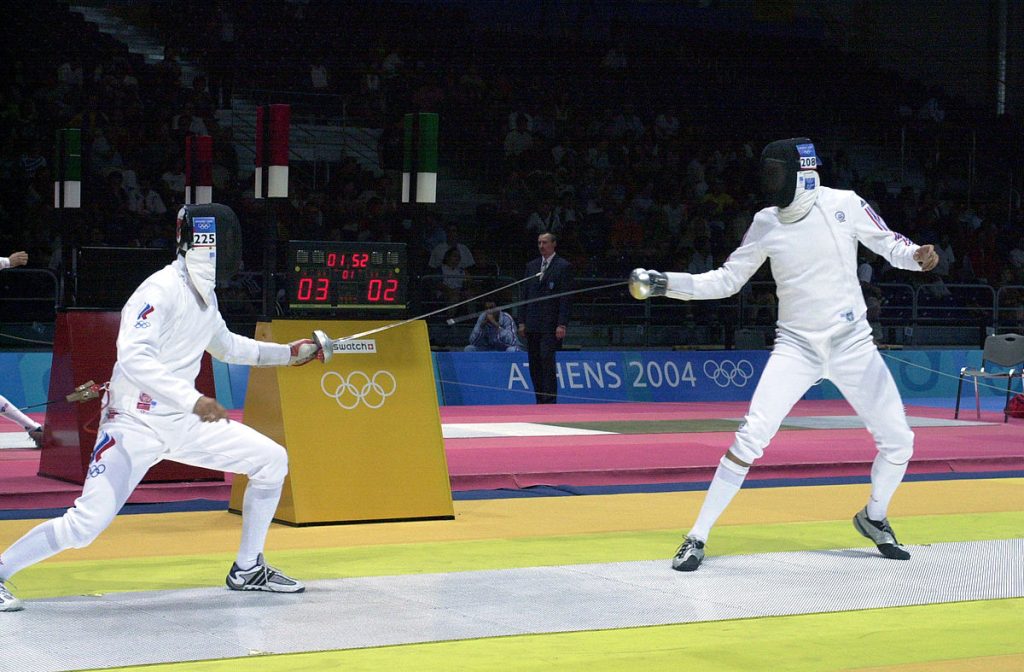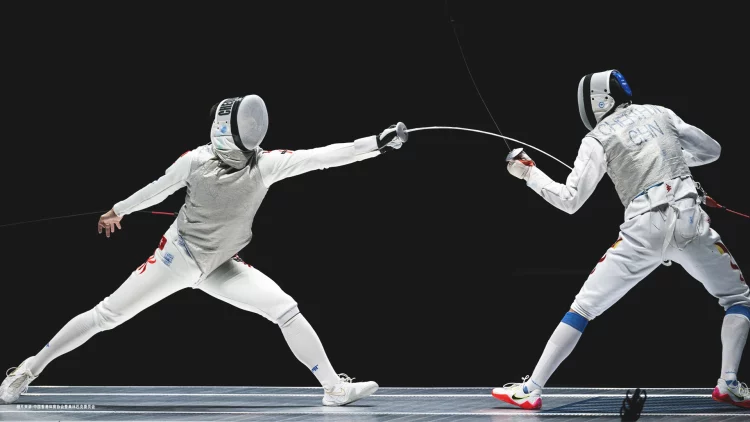Introduction
Fencing is a sport that has long been associated with precision, strategy, and rich tradition. Yet, despite its deep roots in Olympic history, it has often struggled to capture the widespread attention it deserves. However, following the Tokyo 2020 Olympic Games, the sport has experienced a renaissance. The rise of young fencers and the emergence of new talent have injected a sense of excitement and innovation into the sport. This has led many to ask: Is fencing poised for a revival, and does the rise of these young athletes mark the beginning of a new era?
The Tokyo Olympics, held in 2021 after a one-year postponement due to the COVID-19 pandemic, provided a unique platform for young fencers to showcase their skills. With veteran champions stepping aside and fresh faces making their mark, fencing has undergone a transformation. This article will explore how the sport has evolved in the post-Tokyo era, examining the factors behind its resurgence, the role of youth in this movement, and the potential for a new era of fencing greatness.
I. The State of Fencing Before the Tokyo Olympics
To understand the current revival of fencing, it’s important to first take a look at the state of the sport leading up to the Tokyo Olympics. Fencing, although an Olympic staple since the modern Games began in 1896, had begun to show signs of stagnation in the years prior to Tokyo 2020. While traditional powerhouses like France, Italy, Russia, and Hungary continued to dominate, the sport was perceived by many as being somewhat inaccessible and overly steeped in tradition.
Several factors contributed to this perception:
- Limited Media Exposure: Fencing did not receive the same level of media coverage as other Olympic sports, limiting its global appeal.
- Aging Demographics: Many of the top fencers at the time were veterans of the sport, and there was concern that the lack of a younger generation stepping up might eventually lead to stagnation.
- Slow Technological Advancement: While other sports evolved in terms of equipment, training, and strategy, fencing remained relatively traditional in its approach, making it harder to attract younger fans and participants.
However, the Tokyo Olympics marked a turning point in how the sport is perceived.
II. The Impact of the Tokyo Olympics: A Catalyst for Change
The Tokyo 2020 Olympic Games were a watershed moment for fencing, and they provided the perfect platform for younger fencers to shine. The Games showcased exciting, unpredictable moments that drew in new fans, and the performances of several up-and-coming stars proved that the future of fencing was in good hands.
A. The Rise of New Champions:
At the Tokyo Games, several young fencers rose to prominence, capturing the attention of both fans and critics alike. In particular, the men’s foil event saw 21-year-old Yakub Ganiyev from Uzbekistan clinch a surprise gold medal, demonstrating that age was no longer a barrier to success. Ganiyev’s victory was symbolic of a larger trend—the rise of younger, less-experienced athletes who were challenging the dominance of seasoned veterans.
On the women’s side, Lee Kyou-hyun from South Korea and Cecilia Baena from Colombia, both in their early twenties, impressed with their fearless approach and innovative techniques. Their performances signaled a changing of the guard in fencing, with young athletes bringing a fresh energy to the sport.
B. A New Generation’s Approach:
These young athletes brought more than just technical skill to the table—they introduced a new way of thinking about the sport. Modern fencers are embracing a more dynamic approach to fencing, blending speed, agility, and tactical creativity with traditional techniques. Their ability to adapt to changing conditions during bouts, combined with cutting-edge training regimens, is reshaping how fencing is played at the highest levels.
- Mental Fortitude: Many of the younger fencers are known for their psychological resilience. Their ability to handle pressure, focus during crucial moments, and stay composed under the intense spotlight of international competition is a testament to the evolving mental toughness required in today’s fencing world.
- Strategic Innovation: Young fencers are incorporating new strategies and techniques that break away from the rigid, traditional fencing styles that were once dominant. Instead of relying solely on established techniques like the lunge or parry, younger athletes are pushing the boundaries by introducing unpredictable moves, sharper counter-attacks, and quicker recoveries.
III. Technological and Tactical Innovations Post-Tokyo
One of the most significant changes in fencing following the Tokyo Olympics is the increasing role of technology and tactical innovation. Fencing, like many other sports, has gradually embraced modern tools to enhance training, improve performance, and reach a wider audience.
A. Technological Advancements in Training:
Fencers now have access to more sophisticated training tools, including digital feedback systems that analyze their movements in real time. Motion-capture technology, for example, is being used to break down the biomechanics of each fencer’s actions, helping them optimize their technique and improve their efficiency. Video analysis, wearable sensors, and other data-driven technologies are becoming integral parts of a fencer’s training regimen, allowing coaches to provide more personalized and targeted feedback.
B. The Digital Revolution:
Beyond the training room, digital platforms are also helping to bring the sport closer to a global audience. Social media has played a huge role in giving young fencers a platform to showcase their skills and connect with fans. Many young athletes now use platforms like Instagram and YouTube to share their training sessions, personal stories, and behind-the-scenes moments, helping to humanize the sport and attract younger fans.
Moreover, online streaming platforms have made it easier than ever for fans from around the world to follow live fencing events. This has been particularly important in engaging younger generations who are accustomed to digital accessibility. Events that once had limited television coverage are now available to a global audience, helping the sport reach new heights of popularity.

IV. The Role of National Federations and Grassroots Development
National federations and grassroots initiatives have played a crucial role in the revival of fencing. A number of countries have ramped up their efforts to develop young talent, recognizing that nurturing the next generation of fencers is key to the sport’s long-term sustainability.
A. Grassroots Programs and Scholarships:
Countries like France, Italy, and South Korea have invested heavily in grassroots fencing programs. These programs are designed to identify promising athletes from a young age, offering scholarships, mentorships, and competitive opportunities to foster their development. In many cases, these programs focus not only on physical skill but also on building mental resilience and fostering teamwork, which are essential components of elite-level fencing.
B. International Collaboration:
In addition to national efforts, international collaboration between fencing federations has also played a significant role in boosting the sport’s profile. Collaborative training camps, exchange programs, and international competitions allow young athletes to compete and learn from the best, accelerating their growth and exposure on the world stage.
V. The Future: A New Era for Fencing?
As we look toward the future, it seems clear that the rise of young talent in fencing is not just a passing trend—it’s a sign of a new era. With an increasing focus on innovation, both in terms of technique and technology, fencing is poised to undergo a transformation. This new generation of fencers, who embrace both tradition and modernity, could very well take the sport to new heights.
For the first time in a long time, there’s a sense of optimism surrounding fencing’s future. Whether it’s through the emergence of new champions, the introduction of new strategies, or the growing accessibility of the sport to a global audience, fencing is at the threshold of a new era.
Conclusion
The post-Tokyo era marks a period of rebirth for fencing. With young athletes breaking barriers, embracing new techniques, and bringing fresh energy to the sport, fencing is experiencing a revival that promises to excite both old fans and new ones. As these young fencers continue to rise and make their mark on the world stage, one thing is certain: the future of fencing is bright, and a new era has just begun.


































Discussion about this post